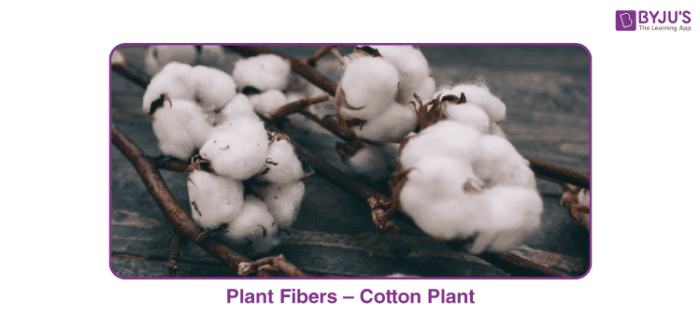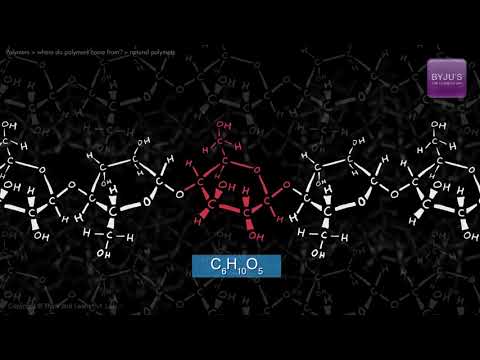Table of Contents
What is Plant Fiber?
A material which is composed of thin and continuous strands is known as fibre. Plant fibres are elongated most commonly sclerenchyma supportive plant cells with thick cellulose walls with a well-organised structure.
Fibre can be of two types.
-
-
-
- Natural fibre
- Synthetic fibre
-
-
The fibres which are obtained from plants and animals are known as natural fibres whereas synthetic fibres are man-made fibres; most of them are prepared from raw materials (petroleum) called as petrochemicals.
Examples of natural fibres are cotton and jute whereas examples of synthetic fibres are: nylon, polyester, etc. Fibres that are obtained from the plants are known as plant fibres. On the other hand, fibres that are obtained from the animals are known as animal fibres.

Recommended Videos

List of Plant Fibers
Plants including cotton, jute, flax and hemp are used to obtain plant fibres. Many plant fibres are produced as field crops.
Some examples of the plant fibres are given below:
1. Cotton
-
-
-
- Cotton is a soft fibre that is obtained from cotton plants and grows as a boll.
- It is mainly grown in regions having black soil and warm conditions.
- In India cotton is basically grown in Maharashtra, Punjab, Rajasthan, Madhya Pradesh, Gujarat etc.
- It is one of the most commonly used fibres.
- When cotton plants start flowering, they give flowers of yellowish-white colour which turns red after a few days.
- Slowly, flowers change into cotton balls.
-
-
2. Jute
-
-
-
- Jute fibre is obtained only from the stem of the jute plants. It is mainly grown in the rainy season.
- Jute mainly grows in regions having alluvial soil which is found in the delta regions of the Ganges and Brahmaputra rivers.
- In India, jute is basically grown in the states of Bihar, West Bengal and Assam.
- Jute is sometimes also called as the golden fibre. It is soft, shiny and long fibre with a silky texture.
- Jute plant is about 3 meters in height and bears yellow flowers in a few months.
- At flowering stage only, jute plants are cut and a good quality fibre is obtained at this stage.
- The dry leaves of the plants are kept in water for a few days.
- During this time, the liquid skin moves out to separate the fibre and this process is known as retting.
-
-
To know more about cotton and jute please subscribe BYJU’S on YouTube and to follow more about the same, download BYJU’S – the learning app.

Comments